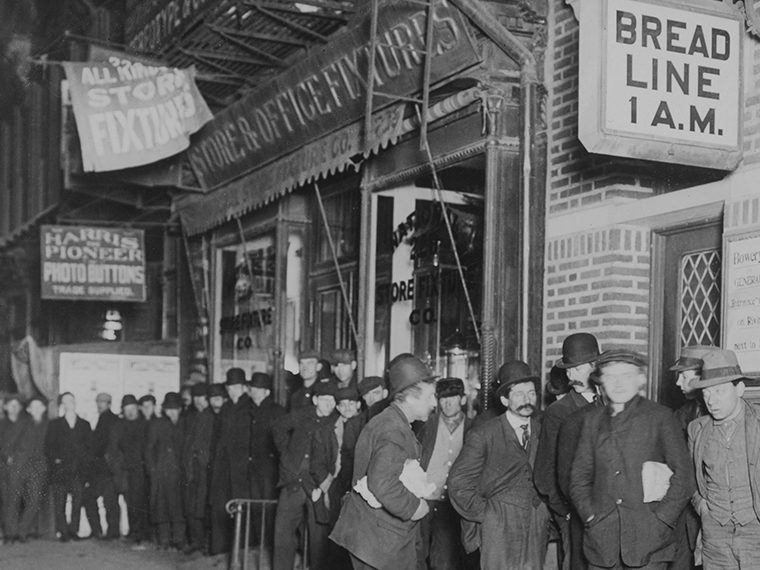Lenders financed expansion in some markets, offsetting problems in others
The Great Moderation was a period in economic history that every central banker would love to replicate, if only they knew how. Between about 1980 and 2007, inflation was generally low, recessions were blessedly short, and industrialized economies more or less grew steadily. Considering there’s typically crippling inflation, deflation, unemployment or some other serious economic issue in most decades, the Great Moderation looks like a halcyon era.
Unfortunately, good luck likely is one of the three generally accepted key factors allowing that long stretch of economic stability in the U.S., according to former Federal Reserve Chairman Ben Bernanke. Structural changes in the economy, like tech advances that raise productivity, and inflation-targeting monetary policy played large roles. However, Bernanke and many other economists agree that the economy benefited from fewer significant issues, such as an oil crisis, than is common over a 20-year period.
Opt In to the Review Monthly Email Update.
A working paper suggests a fourth potential factor in the Great Moderation: financial deregulation. Relaxed cross-state-border banking rules in the late 1980s and ’90s allowed banks to divert loan supply from states where big companies were experiencing productivity losses toward states where there were fewer risks to lending, according to the findings by UCLA Anderson’s Shohini Kundu and University of Chicago’s Nishant Vats. The free flow of loan money materially boosted economic growth in the receiving states, which helped reduce volatility in the U.S. economy at large, according to the findings.
The study, unlike some others, does not focus on the fallout from generalized economic shocks, like natural disasters or area housing price corrections. Those events directly shrink the amount of money local banks have to lend, because the institutions have to hold more capital to cover impending defaults and withdrawals.
The Importance of Stable Loan Supply
Instead, the researchers looked at a stable loan supply — and where it is directed — when a local economic shock doesn’t directly impact the bank. While noncapital or idiosyncratic shocks may have an impact on the bank’s long-term profitability, they do not result in immediate loan defaults or deposit withdrawals.
The authors use productivity hits and gains at the largest companies in every state to study idiosyncratic shocks to the banking system. Giant corporations don’t rely heavily on bank loans for financing, Kundu explains in an interview, so their booms and busts don’t necessarily result in changes to the amount of capital held at local financial institutions. However, when a Boeing jet crashes or its factories fall behind schedule, Boeing’s suppliers everywhere suffer. Conversely, when Intel successfully launches a new chip, its affiliated businesses and workers share in the gains.
Prior to banking deregulation, productivity hits at major companies in one state slowed growth there and in neighboring states. Labor strikes in Illinois, for example, meant trouble in Indiana too. This contagious pain helped create volatility across the U.S. economy during the 1970s and ’80s, when there were wild swings in inflation, GDP growth and employment in relatively short periods of time.
Cross-border Banking Can Help Lenders Hedge Bets
This study suggests that cross-border banking, which was implemented nationwide in the decade preceding 1992, mitigated the impact of idiosyncratic shocks by releasing previously trapped loan supply. With banks free to diversify geographically, they hedged against local companies’ problems by making more loans in the less affected states.
According to the study, this strategy both reduced risk for banks and shielded neighboring states from neighborhood problems. The researchers estimate that a 1% increase in bank loan supply led to between 0.05 to 0.26 percentage point increase in economic growth.
The Great Moderation ended in 2007 with a capital, not idiosyncratic, shock to the economy. When home prices fell, trillions of dollars in mortgages were exposed to high-risk borrowers. The banking system’s inability to cover the sudden surge of loan defaults led to a widespread credit crunch that ultimately resulted in deflation, high unemployment and global recession.
Featured Faculty
-
Shohini Kundu
Assistant Professor of Finance
About the Research
Kundu, S. and Vats, N. (2021). Banking Networks and Economic Growth: From Idiosyncratic Shocks to Aggregate Fluctuations.






